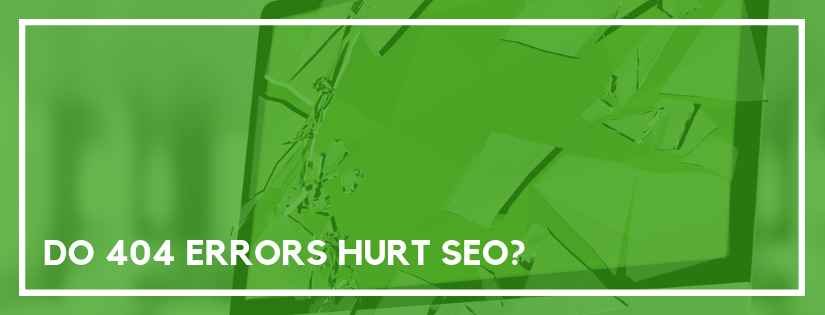Staying on top of technical SEO must-dos can get overwhelming; especially for a non-technical person. Maintaining your website is important, but what should you do about 404 error pages? Do 404 errors hurt SEO? Let’s dig into the 404 error details that matter when it comes to SEO.
Short Answer is No — But it’s Complicated
No, 404 error pages do not have a direct impact search rankings for your website. Every webpage has 404 error pages, they are a normal and expected part of your website.
If you go to your website and then append any random phrase to the end of the URL you will likely get a 404 error page. This is the proper result for the action since it’s unlikely there was a relevant page for your random phrase. Search engines understand this and do not penalize for it.
Your 404 Error Page Will Not Rank — But Your Website Will Not Be Impacted
Just to be clear, if the page you are trying to rank does not exist and returns a 404 error, than it will not be indexed by search engines. It seems like this would go without saying but a page needs to exist to be ranked.
However, merely having 404 error pages will not negatively impact the SEO performance of your website as a whole.
404 error pages can affect link equity and user experience. These are the problems you want to pay attention to regarding 404 error pages as they can negatively impact your SEO efforts.
Broken Links Can Hurt SEO
If you have links pointing to a 404 error page than your website now has a broken link. Whether the 404 error page is on your website or a different website you want to fix this.
Having a broken link on your website is a bad user experience. The 404 page itself won’t cause SEO issues, but if you link to it you can create SEO problems.
I like to periodically test my website to see if there are any broken links. A good tool you can use to search for any broken links is Broken Link Check. Run a scan and review the list. Remove or replace any broken link on your website.
Ensure Your 404 Error Page Offers a Good User Experience
Just because the user got to a 404 error page doesn’t mean you want them to go away. Create a custom 404 error page so you can make the user experience as good as possible.
Add a call-to-action (CTA) to your 404 page to make it easy for users to continue. Most likely, your CTA will direct users to your homepage. But, you may have a search page or category page that makes more sense for your website.
Blank Pages Can Be Indexed If They Don’t Return a 404
If a page loads successfully (200 status code instead of 404) it can be indexed by search engines. It is possible that certain elements don’t load correctly and you essentially have a blank page.
Google classifies these as soft 404s. They are not technically 404 pages but they have broken elements that require attention.
If you want to check to see the status code of a webpage (404 vs 200) you can use the URL inspection tool in the Google Search Console.
To view the status code in Google Search Console:
- Enter the URL in the URL inspection tool.
- Click View Crawled Page.
- Click the More Info tab on the crawled page panel.
- The HTTP Response section will indicate the code.
Add Redirects for Common 404 Errors
If you have other websites sending traffic your way you don’t want to miss that opportunity. Yet, sometimes websites accidentally type the URL incorrectly and then you have potential users going to an error page.
If you notice this happening, you can either contact the website and ask them to update the link or you can add a redirect. Chances are a redirect will be the simpler choice.
You don’t want to redirect a 404 error page to your homepage or a different generic or irrelevant location. But, if there is a clear page that users would want to land on when that URL is entered than add a redirect to optimize the experience.
How to Find 404 Errors
You can find 404 errors using either Google Search Console or Bing Webmaster Tools. We’ll go over how to find them in each tool.
If you find 404 errors for pages that you have a relevant existing page, then add a redirect. If the page is truly no longer there or never existed and not related to your website, then just ignore it. There is nothing wrong with having some 404 errors when they make sense.
Finding 404 Errors in Google Search Console
To find 404 error pages in Google Search Console go to Index > Coverage. Then, look at the pages listed under the Error tab.
Finding 404 Errors in Bing Webmaster Tools
To find 404 error pages in Bing Webmaster Tools go to Reports & Data > Crawl Information. The tab selected by default on that page lists the 400 errors so you will see any 404 errors listed at the bottom of the page.
In Summary
404 error pages alone won’t hurt your SEO. But, the user experience is always important. So, make sure your 404 page guides the user to the right place and fix any broken links.
Do you have a custom 404 error page? What did you do to try and optimize the user experience? Please share in the comments!
